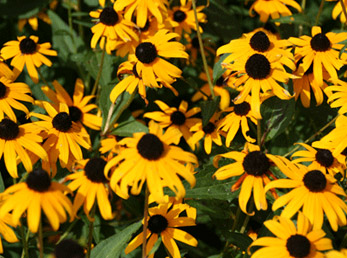May Christ bring us all together to everlasting life. Rule of Benedict
You wake up, turn on the coffee, open the front door to pick up the paper and see ... a yard full of plastic pink flamingoes. Overnight, your front yard has been filled with them. You've been "flocked."
Delightful? To you and the friends who planted them there, sure. Beautiful? Probably not. Eyesore? To many of your neighbors, yes.
Our sense of beauty is contextual, of course. It is, as they say, in the eye of the beholder. But why is it important to define what is beautiful as opposed to merely cute, fun or even downright ugly?
Because beauty is a path to God.
Beauty is God's handwriting – a wayside sacrament. Ralph Waldo Emerson
Spiritual writers, poets and seekers have explored the question of what is beautiful and why since the beginning of recorded time. From Ecclesiastes to the modern day monastics who live at St. Mary Monastery, it's a discussion that creates more questions than it answers. But the questions may be the point.
"Beauty is the heart's response to what we see or hear or experience," Sr. Susan Hutchens, OSB says. "It is how something touches us internally."
That is, our visceral response to scenery, artwork or music defines what is beautiful for each of us. The experience evokes a response within us of joy or transcendence. So, we might agree that a painting is "beautiful," but if it doesn't evoke joy from within, it isn't meaningful to us.
"Sometimes when I walk into the chapel and see a sunset after a full day, I just stand in awe and look," Sister Ruth Ksycki, OSB says. "It transports me beyond myself and brings my spirit to life.
"We have an innate attraction to beauty," she continues. "Beauty can inspire, challenge, awe us. It can awaken us to notice and transform us. It can bring to us a sense of order, harmony, peace, and new life. A pursuit of beauty involves taking the time to notice and opening our eyes to see."
Looking everywhere, then, for what transforms us.
God has made everything beautiful for its own time. Ecclesiastes 3:11
When Mount St. Helens erupted in 1980, it left hundreds of square miles of old-growth Washington forest buried under heavy gray ash. The landscape, once green and lush, was instantly barren.
Ten years later, Sister Mary Core, OSB visited the site with her family. She remains profoundly moved by what she saw.
"We could see buried cars and trees sticking up at angles like spilled toothpicks," she says. "Authorities were saying at the time that it was possible nothing would ever grow there again. It was like walking on the moon.
"I climbed as high as I could and looked around at the vast nothingness. When I turned to leave, I looked down, and there, in the ash, was one single purple flower. I was overcome with emotion. Never before and never since have I had such an experience of beauty."
Sister Mary says the experience was transcendent for her. "I thought, Here is life," she says. "It cannot be stopped or destroyed, even with the power of a volcano. It was an amazing resurrection experience that I will never forget."
Echoing Sisters Susan and Ruth, Sister Mary says we need to be open to seeing beauty wherever we go.
"Beauty is a response from within," she says. "It's not the object itself. Rather, it's how we are called out of ourselves. It's transcendent."
Moved by grace, we turn toward God. Catechism of the Catholic Church
The grace that attends our response to beauty – whether to nature, architecture, sculpture, music or another person – moves us deeply. It leads us to God.
"The eye is the window to the soul," Sister Susan says. "Everything that goes in goes all the way in. So we need to be surrounded by beauty. We need to pursue beauty."
How? In art, nature, music, people ... and not just the commercially popular versions.
"The withered face of an old man with no teeth sitting on a stoop can evoke a sense of beauty," Sister Susan says. "Beauty is there for us always."
Sister Ruth suggests we make a daily practice of pursuing it. "Listening to classical music can be transforming," she says. "Drawing can also take one beyond the limits of time and space. The beauty of language in poetry and prose bring so many new insights into life. A pursuit of beauty is a pursuit of spirituality. It brings us to God."
